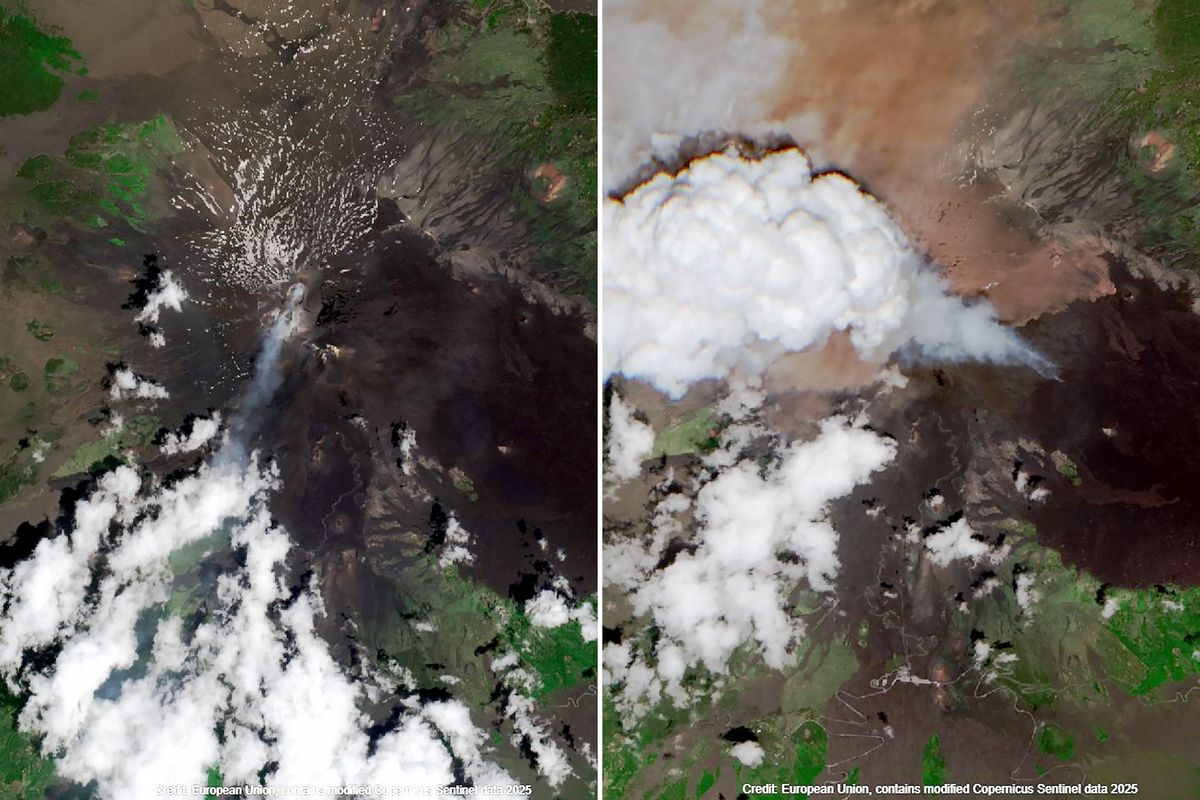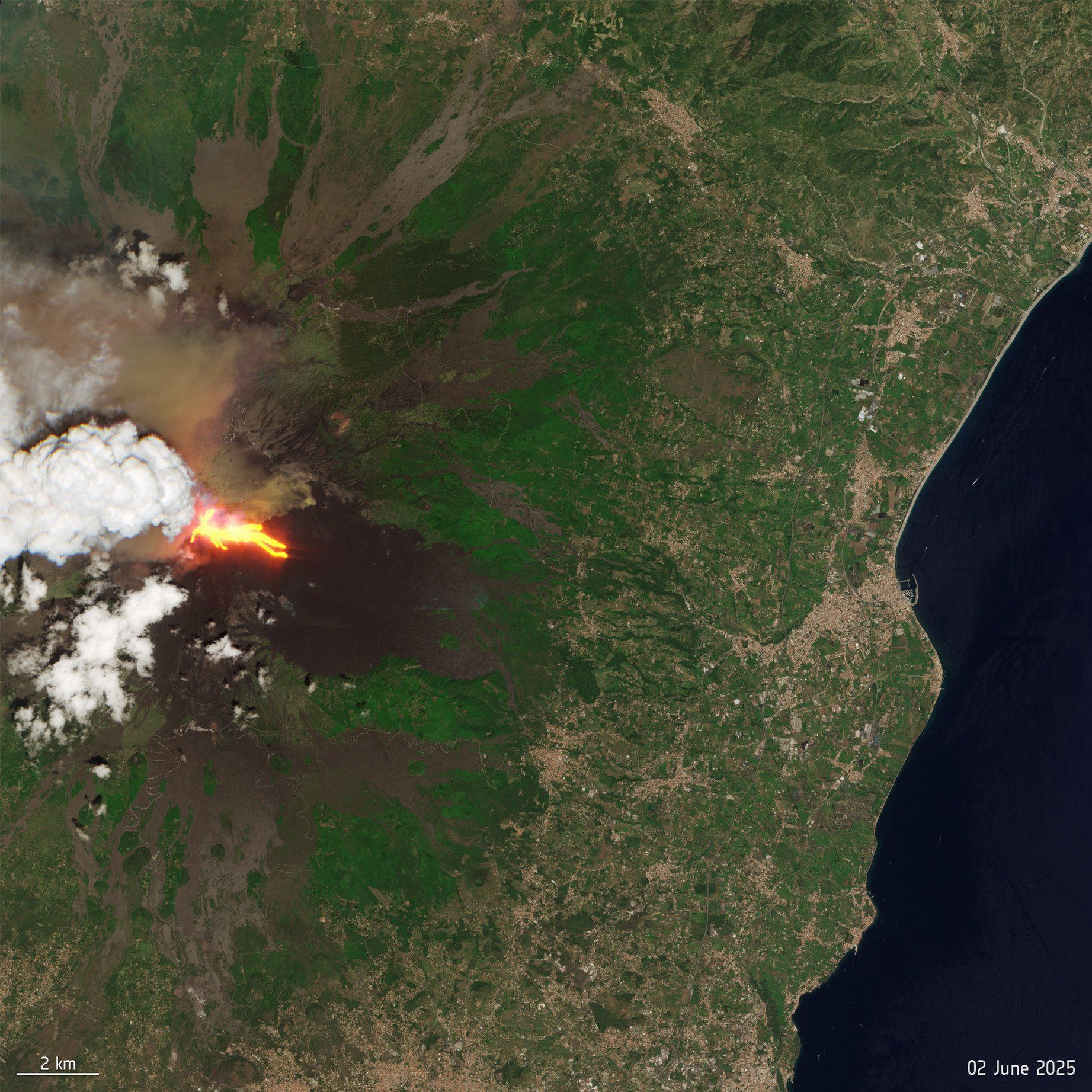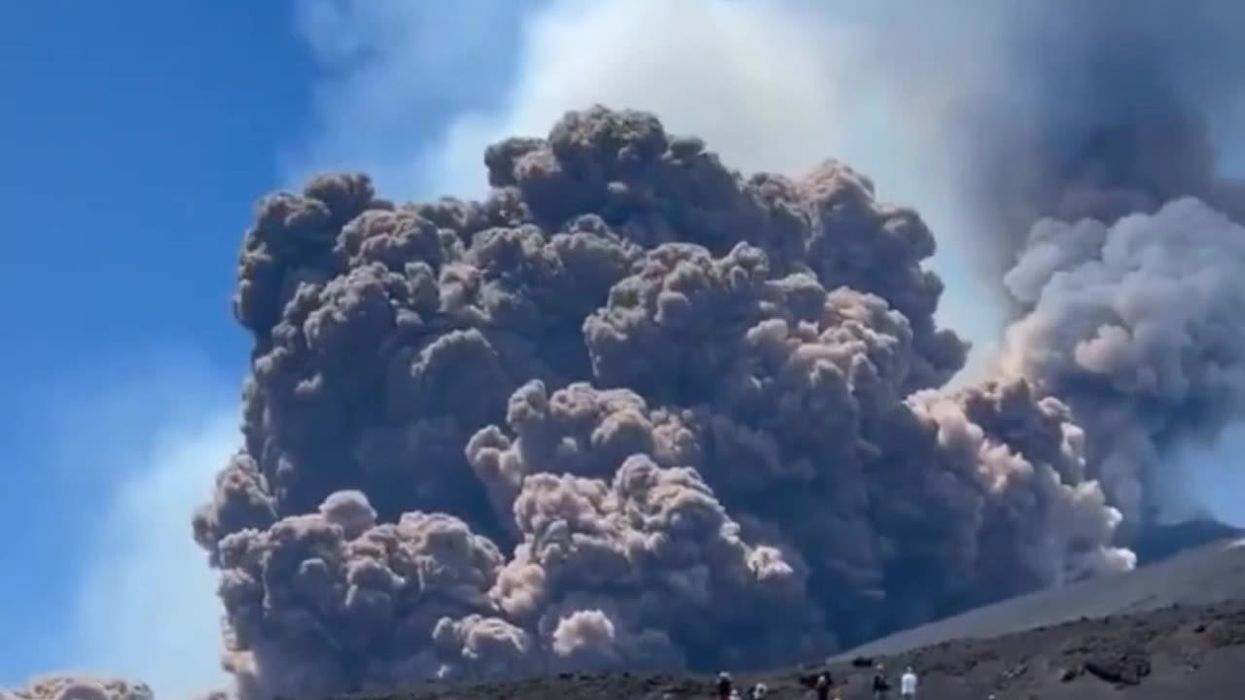Sinead Butler
Jun 05, 2025
Mount Etna erupts in huge volcanic blast sending tourists fleeing
Aurelien Pouzin
Mount Etna's violent eruption on Monday morning (June 3) could be seen from space as striking satellite images photographed the event on the Italian island of Sicily.
Etna is the largest and most active volcano in Europe, and with this latest eruption, tourists could be seen running away as the volcano was spewing out smoke.
The National Institute of Geophysics and Volcanology (INGV) had noted Mount Etna was experiencing “intense and almost continuous” strombolian explosions.
“The INGV-Osservatorio Etneo informs that over the last few hours, the eruptive activity already mentioned in the previous statement has continued with strombolian explosions of increasing intensity that, at the moment, are to be considered to be very intense and almost continuous,” the research institute said on Monday.
The photographs taken by the Copernicus Sentinel-2C satellite were captured "just minutes after the onset of the eruption", sending a massive plume of ash four miles (6.5km) into the sky.
(The Volcanic Ash Advisory Centre had issued a brief red warning for this, but no flights were been disrupted in the end.)
"Copernicus data is key to tracking global volcanic activity, helping communities to assess hazards, support emergency response operations, and monitor long-term changes to landscapes," Copernicus said in a post, alongside the satellite images.

A pyroclastic flow also occurred (a fast-moving combination of hot gas and volcanic matter) that was seen falling down one of the mountain faces following the collapse of material from a part of the crater, and also produced hot molten lava plumes as a result.
To understand the danger of pyroclastic flows, on average, they travel 60 miles per hour (100 kmph) and can reach temperatures up to 1,000°C (1,800°F).
Where did this cloud from Mt Etna travel?
According to INGV, the water and sulphur dioxide cloud was "drifting towards the southwest" at the start of the eruption, and then it noted "the falling of a little thin ash has been flagged" in the Piano Vetore area, where there is a wildlife park.
Thankfully, the flow didn't cause any harm in this instance. Renato Schifani, President of the Sicily region, said experts had assured him there was "no danger for the population" as the flow didn't go past the Valley of the Lions, a tourist area.
As seen in the images, a "fine reddish material" was also produced by the pyroclastic flow over the northwest.

What is the Mount Etna situation as of now?
According to the latest statement by INGV, the eruption activity has ceased.
The last time Mount Etna violently erupted was on 14 August last year, and resulted in airport closures nearby after the eruption sent a smoke plume 5.9 miles (9.5 kilometers) high.
Elsewhere, Mount Etna key details as huge volcano erupts in Sicily forcing tourists to leave, and watch moment tourists flee erupting Mount Etna.
How to join the indy100's free WhatsApp channel
Sign up to our free indy100 weekly newsletter
Have your say in our news democracy. Click the upvote icon at the top of the page to help raise this article through the indy100 rankings.
Top 100
The Conversation (0)














